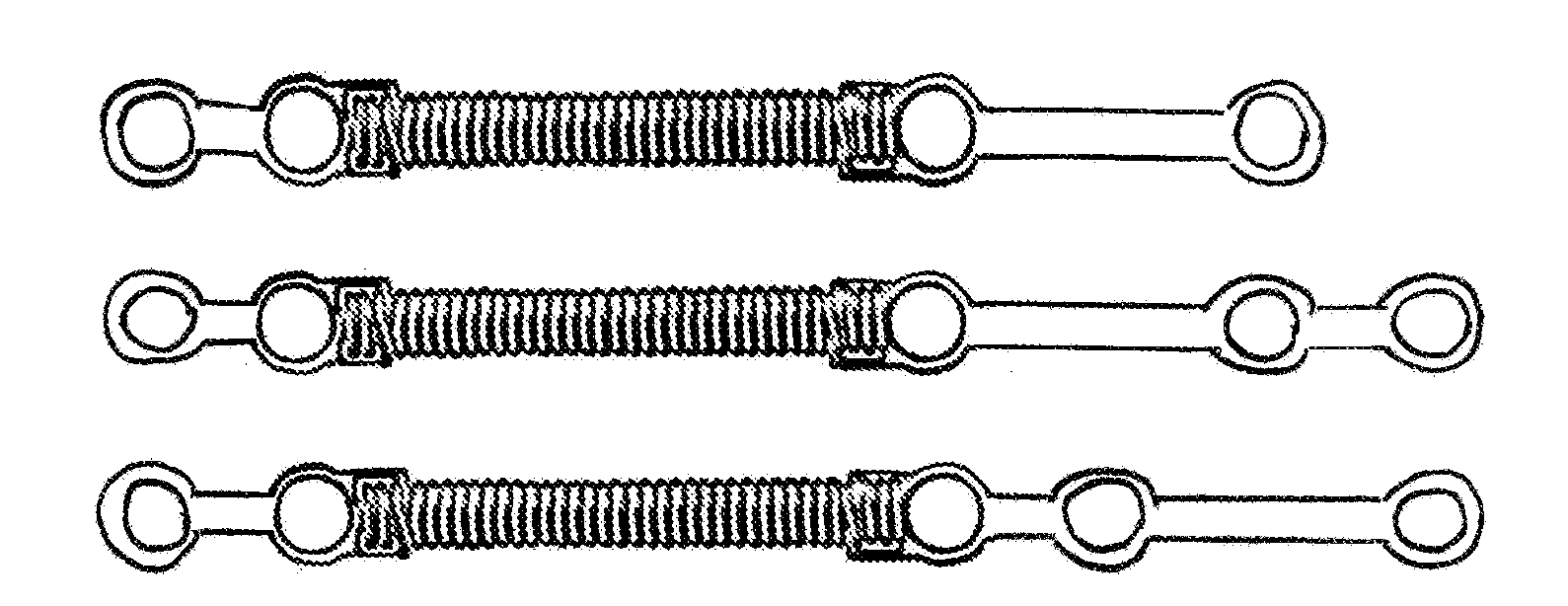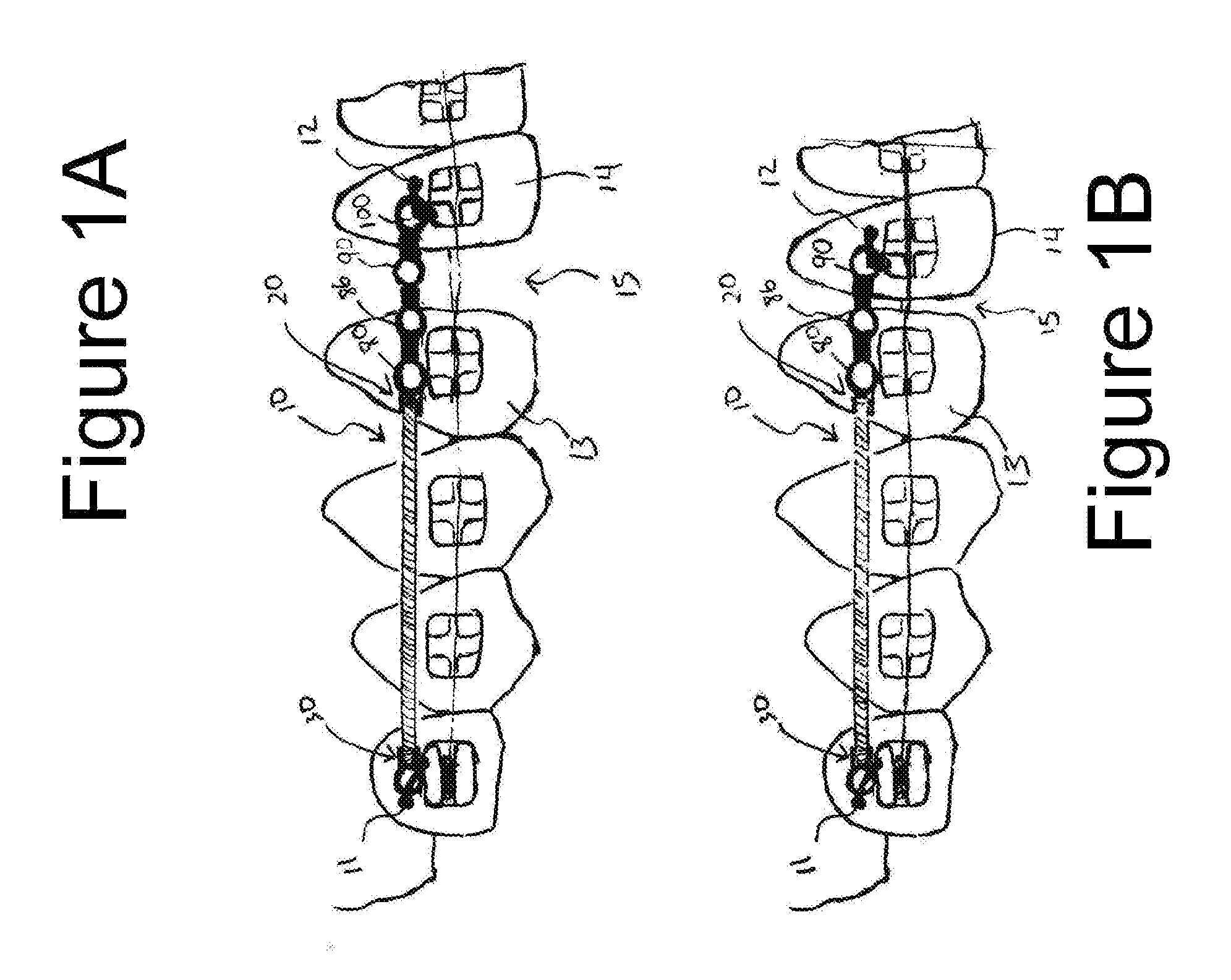Variable Extension Spring For Orthodontics
- Summary
- Abstract
- Description
- Claims
- Application Information
AI Technical Summary
Benefits of technology
Problems solved by technology
Method used
Image
Examples
Embodiment Construction
[0030]While this invention is susceptible of embodiment in many different forms, there are shown in the drawings, and will be described herein in detail, specific embodiments thereof with the understanding that the present disclosure is to be considered as an exemplification of the principles of the invention and is not intended to limit the invention to the specific embodiments illustrated.
[0031]FIG. 1 illustrates an exemplary embodiment of the variable extension spring. The variable extension spring comprises a coil spring 10, with two anchoring ends 20, 30. The two anchoring ends 20, 30 are respectively attached to anchoring mechanisms 40, 50.
[0032]The anchoring mechanism 50 comprises engagement mechanisms 80, 86, 90, 100. Anchoring mechanism 60 as illustrated in FIG. 3 comprise engagement mechanisms 80, 90, 100. At least one of the anchoring mechanisms comprises more than one engagement mechanism. FIG. 1A illustrates the variable extension spring of FIG. 1 extended between two a...
PUM
 Login to View More
Login to View More Abstract
Description
Claims
Application Information
 Login to View More
Login to View More - R&D
- Intellectual Property
- Life Sciences
- Materials
- Tech Scout
- Unparalleled Data Quality
- Higher Quality Content
- 60% Fewer Hallucinations
Browse by: Latest US Patents, China's latest patents, Technical Efficacy Thesaurus, Application Domain, Technology Topic, Popular Technical Reports.
© 2025 PatSnap. All rights reserved.Legal|Privacy policy|Modern Slavery Act Transparency Statement|Sitemap|About US| Contact US: help@patsnap.com



